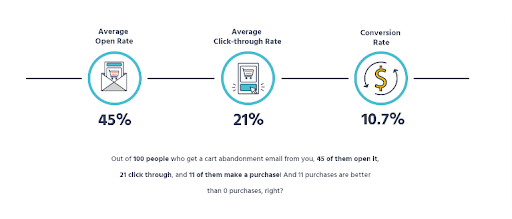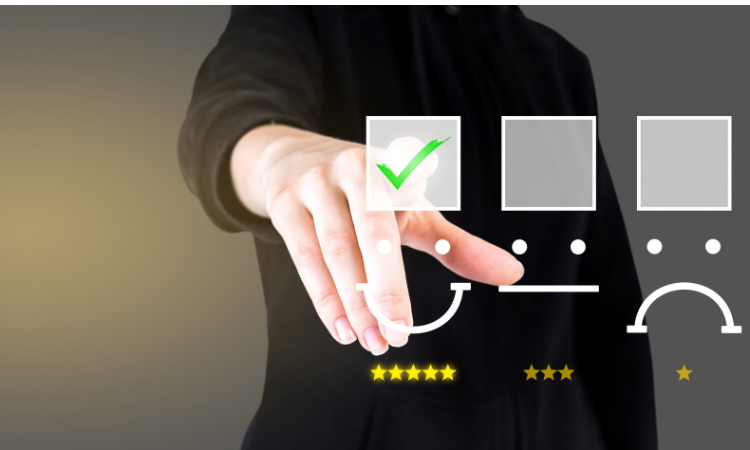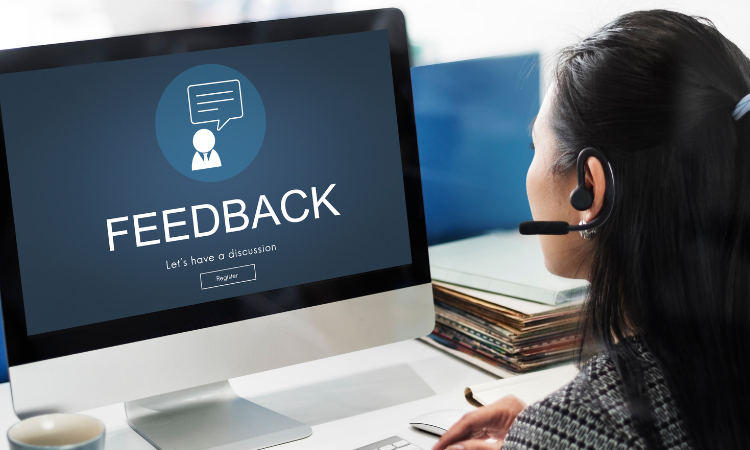Despite the incredible growth of the eCommerce industry post-pandemic, online shoppers feel that eCommerce merchants still don’t understand their needs.
The growth of the eCommerce industry has been absolutely astounding in the last few years.
The COVID-19 Pandemic, especially, made consumers flock to eCommerce like never before.
However, not everything is sunshine and rainbows when it comes to running an eCommerce business.
For instance, consumers nowadays expect more and more personalized experiences from eCommerce brands.
The only way to fulfill their demand is by offering a personalized customer experience.
And that’s what we’ll be covering in this article — we’re going to discuss about eCommerce customer experience personalization, and the top 5 strategies to transform your buyer’s journey into a memorable shopping experience they’ll want to repeat.
Fuel Business Growth with Customer Feedback 🔥
Collect real-time, in-moment feedback at all touchpoints in customer journey and leverage feedback insights to transform customer experience.

Table of Content
What is eCommerce Personalization?
E-commerce personalization is the art of delivering a unique customer experience tailored based on the individual behaviors and preferences of your potential customers.
E-commerce brands can leverage certain data points such as browsing & purchase history, geographic location, and shopping behavior to create personalized customer experiences that fulfill each customer’s individual needs.
In fact, the more personalized customer experience you can deliver, the more your customers will engage with your brand and make repeat purchases.
A research by McKinsey has even confirmed that personalization can increase your conversion rate by 15% and customer satisfaction rate by 20%.
With that, let’s see how you can deliver dynamic, personalized customer experiences to your potential customers.
Top eCommerce Customer Experience Personalization Strategies
eCommerce customer experience personalization strategies are all about displaying the right content to each potential customer at exactly the right time in your eCommerce website. With the rise of composable ecommerce, businesses can now build flexible, modular solutions that allow for seamless integration.
And the good news is that there are plenty of eCommerce personalization strategies you can leverage.
Here are the top 5 eCommerce customer experience personalization strategies that have proven to work wonders for eCommerce brands often implemented with the expertise of Ecommerce Development Companies.
1. Display Personalized Product Recommendations
Personalized product recommendations help eCommerce brands to show product options that are relevant to a customer based on their browsing history and past shopping behavior. eCommerce brands are leveraging personalized product recommendations by building a CMS (Content Management System) that analyzes customer browsing history and past shopping behavior to display relevant product options.
According to Barilliance, personalized product recommendations account for as high as 31% of total eCommerce revenue and help reduce the shopping cart abandonment rate by 4.35%.
As an eCommerce business, you should push for creating personalized, high-value product recommendations that increase the average order value (AOV) of each sale.
2. Personalize On-Site Popups Based on Customer Behavior
On-site popups are a great way to stir up customer engagement during the buyer’s journey.
Common popups like offering free shipping when a minimum order amount threshold is reached or a coupon code in exchange for newsletter sign-up can help to increase your eCommerce sales.
However, your on-site popups must appear at the right place and at the right time, ensuring browser compatibility across different devices and screen sizes. Otherwise, it will simply end up annoying your customers and sending them off to your competitors.
For example, if you display a popup the moment a potential customer enters your eCommerce store, it can cause more harm than good.
The point is that your on-site popups must be personalized. But more importantly, you should wait till sufficient data is collected to figure out what kind of offers is going to appeal to each customer. And then, identify the right time to display the on-site popup.
3. Send Cart Abandonment Emails with a Personalized Offer
Cart abandonments are inevitable in the eCommerce industry.
According to Baymard Institute report, 69.99% of online shoppers abandon their shopping cart during the checkout process. This, in turn, causes eCommerce businesses to lose an average of $18 billion in sales every year due to shopping cart abandonment.
For the uninitiated, shopping cart abandonment is an eCommerce term used to describe potential customers who optimize the checkout process but leave without completing their purchase.
The good news is that you can re-engage those lost customers and convert some of them into paying customers by sending cart abandonment emails.
In fact, cart abandonment emails with a personalized offer is an extremely powerful strategy that can yield incredible results for your eCommerce business.
According to Moosend research:

That said, if you’re not sure which approach to take for sending personalized cart abandonment emails, here’s a simple email campaign & timeline you can use:
-
Cart reminder email (A few hours after the cart abandonment)
-
Follow-Up email (A couple of days after the first email)
-
Personalized discount offer on abandoned items (A couple of days after the second email)
4. Personalize the Unboxing Experience
If you want to take customer experience personalization to the next level, you should consider doing what most eCommerce brands don’t — personalize the unboxing experience for your customers.
Branded packaging, hand-written thank-you notes, new product information can all help to elevate customer experience and remind them that they’ve indeed made the right choice by purchasing from you.
Unfortunately, not all eCommerce brands can offer this extra attention & personalize the unboxing experience in-house. But, you can partner with a 3PL company that provides micro fulfillment solutions & get your products delivered with branded packaging, hand-written thank-you notes, and other such elements.
This way, you can still personalize the unboxing experience for your customers even when you can’t afford to do it in-house.
5. Display a Personalized Popup on Exit Intent
Personalized exit intent popups present a great opportunity to recover some of lost sales right before a potential customer abandons the shopping cart.
Unlike the traditional on-site popups we discussed earlier, exit intent popups appear the moment a visitor starts moving the mouse cursor toward the “close window” button on the browser tab.
To leverage exit intent popups effectively, first, you need to gather data about which product a potential customer viewed the longest. After all, this is the item that the potential customer was most interested in purchasing.
Once you’ve collected this data, you can display a personalized offer banner at the first sign of a customer leaving your store without completing the purchase.
The personalized offer could be an exclusive discount offered within a limited time period. You can even add a countdown timer that shows how much time a potential customer has to claim the discount offer.
Final Thoughts
eCommerce personalization isn’t simple but definitely essential to foster customer relations, loyalty and increase repeat customers.
In fact, if you still don’t start leveraging eCommerce personalization, you’ll most certainly lose out on countless sale opportunities.
By using the strategies outlined above, you can start delivering personalized customer experience in your eCommerce store and increase repeat customers & their lifetime value.











